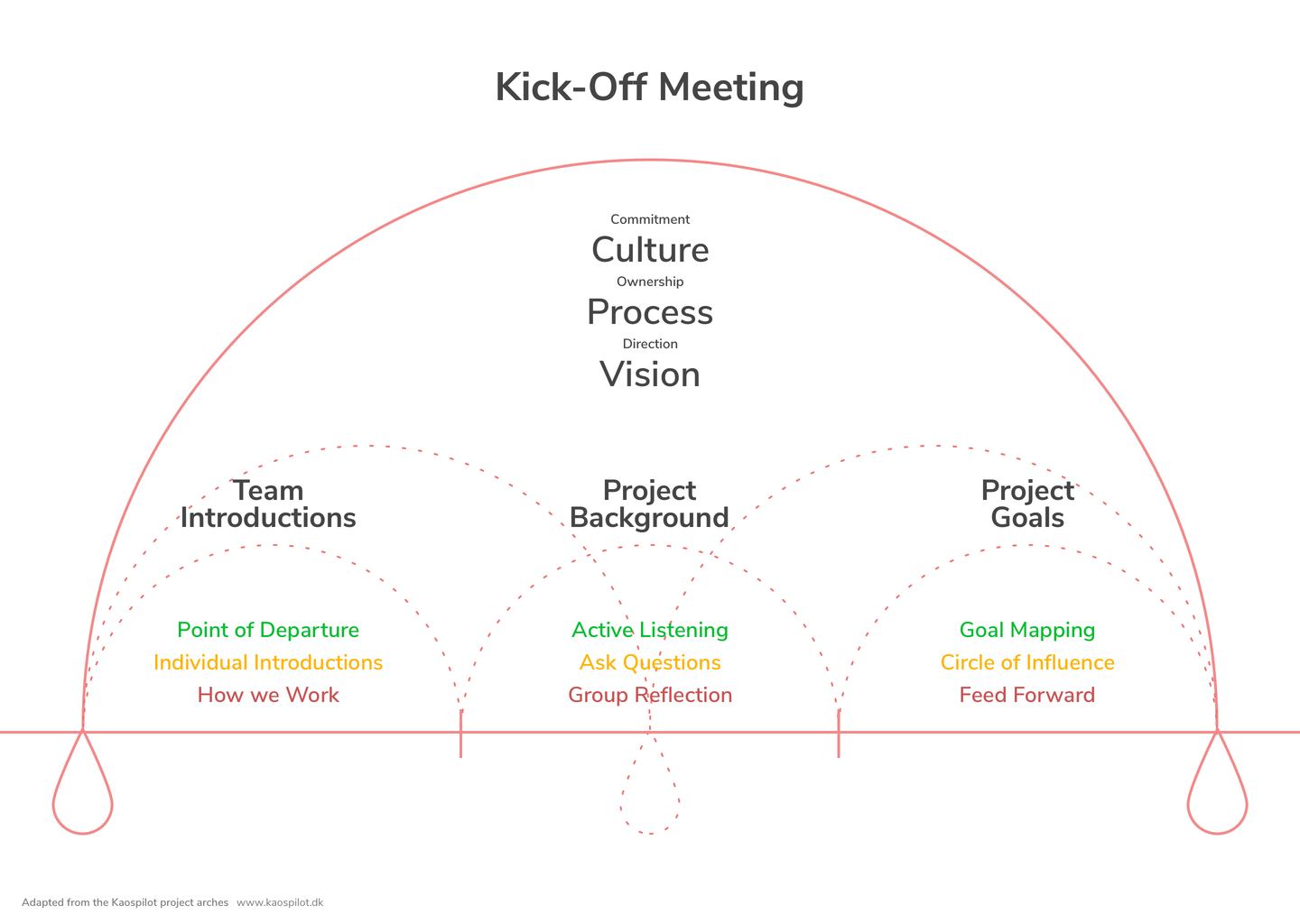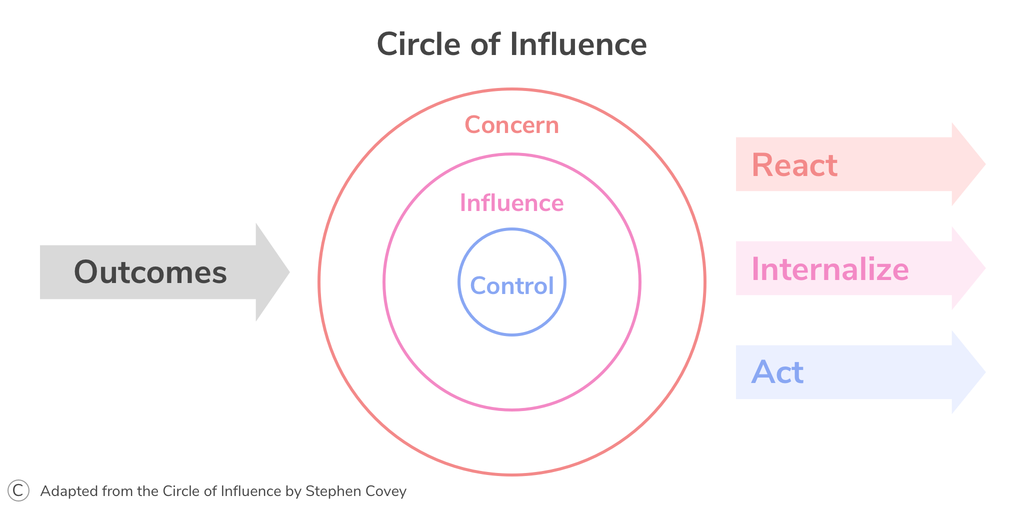
At Mainmatter, we believe in working alongside clients throughout projects not only as a way to get better outcomes but also because we aim to build relationships rather than just projects.
Kick-off meetings are one of the first things we tackle as part of our process to deliver digital products, whether it is creating an app from scratch or a website. We use them to set the beginning of a new project and bring the client on board.
I want to present an approach to kick-off meetings that can spark collaboration early in the project and create common ground between the client and the team. To envision the type of meeting that would undoubtedly be worth the time of everyone attending and produce a mindset that is distinctly different from the typical frame with which most software projects are conducted.
Most kick-off meetings follow this plan:
- Introductions
- Client Background
- Project Goals
- Scope of Project
- Approach
- Roles and Responsibilities
anchorKick-Off Meetings Are More Than Just Checklists
To be clear, I think those are good points to cover; however, treating this as a checklist won't produce any lasting impact on participants. We've all been to many meetings where we just want to get back to work. For that reason, an intentional facilitated approach is required to make these points come to life and spark real and honest discussion.
anchorTeam Introductions Can Serve as a Way to Communicate Organizational and Team Culture
Most teams undergo a gradual process before they can reach peak performance. In the initial forming stage, there is a mix of emotions, ranging from excitement to anxiety that can affect performance. The same is true for team and client interactions at the start of a project. Shared culture can have a significant influence on how fast we can advance as a team.
Starting with a strong notion of the shared culture of a team will influence interactions with the client. If things are left unsaid, we risk filling that space with assumptions and unwritten rules.
So, how can those invisible parts be made visible during an introduction? Next time you introduce yourself, make a conscious decision to share your expectations, what you like and dislike, and maybe dare to be more personal.
anchorExample:
"Hello, my name is Ghislaine, and I will be working with you on the design aspects of this project. I've read your brief, and I find challenges like yours fascinating from a design perspective, especially when it comes to users creating value for others. I hope to learn more from your vision throughout this project and know that I am always open to discuss things briefly, even if unrelated to the project, feel free to send an email if you have any questions."
By being more intentional about what we say during team introductions, we can communicate additional layers of behaviors we like, how people can address us, what we expect from them, and what we bring to the table beside our work.
anchorHelping the Client Describe Their Journey Through Active Listening
The role of clients in projects is significant not only for the obvious reason that they are the ones whom the project is built for but also because they have a great influence on the course of action.
A study by the PMI (Project Management Institute) concluded that one of the biggest reasons for project failure is due to clients realizing new needs during the design and production phases. Because the client has been overexposed to their idea, they mistakenly assume that some details of their journey or motivations aren't relevant to share. The issue is that when clients cannot clearly describe the problem they are trying to solve at the start, their needs may turn self-contradicting throughout the project.
anchorListen Actively and Delay Judgement

It is not hard to find incongruencies or faults when someone is presenting an idea, even more so if it's the first time we are exposed to it. We can help the client connect and provide all the details if we take an active listener position and delay offering suggestions or advice. It is even better if we can ask questions that lead them to be more critical of their assumptions.
The reason why this approach works is best explained using the SCARF model from the domain of neuroscience. This model provides a framework to understand the common factors leading to threat responses and how we can change directions to more collaborative win-win scenarios.
To put it simply, it states that when sensing a threat we turn to avoidance, while rewards make us move towards a situation. This is why active listening is so effective, as we reduce the feeling of a threat if attention is being paid to our efforts. Enabling this state can produce a willingness to move through difficult things, take risks, and try new solutions.
anchorHow do we discuss project goals?
Project goals might be the most critical aspect of this process; after all, there'd be no need to meet or create something if we had no expectations for a project's outcome. However, if those expectations aren't clear for everyone, we might find conflict down the road, and while that's a natural part of projects, confronting them early is the best way to ensure a smooth process.
Talking about problems at the very beginning can be quite hard. And I know because I've been there too. That is until I started my path as a facilitator and experienced the value behind exposing those problems and facing uncertainty from the very beginning.
anchorRecognizing and Avoiding Groupthink

Groupthink — the preference of harmony instead and avoidance of conflict within groups — can cause teams to make sub-optimal decisions when they prioritize conformity over critical reasoning or evaluation. Although it is unintentional, recognizing it and creating spaces for debate can lead to teams that tolerate ambiguity together.
An excellent way to spark debate is to place the goals and outcomes into the 'Circle of Influence'. This is a tool that can help teams discuss goals from a place of ownership and shared responsibility. The idea is to place the goals into each sphere of the diagram and explain the reasons why we think we have or lack control over any desired outcome and things we can do to influence them positively or reduce the impact of negative factors.
It works because, when we can accept our lack of control over something, we ignite the team's creative engine and figure out ways to influence a more successful outcome. We might not be able to implement a fully-fledged feature that would guarantee an advantage, but accepting that might open up unforeseen possibilities.
I like to use the example of Notion, considered now one of the best apps in its category with over 1 million users. It tells the story of how their team managed to rise back up from failure and perform exponentially better only after they run out of cash. A constraint mindset can be the optimal way of creating unparalleled solutions.
anchorNext Steps
The facilitator role should continue to be present during the rest of the project. However, a good start will help everyone handle uncertainty and conflict a lot better, especially during the most challenging parts, but also to celebrate our shared achievements.
To learn more, check out our playbook. It contains a general overview of our process and how we work together to deliver ambitious projects for our clients.
